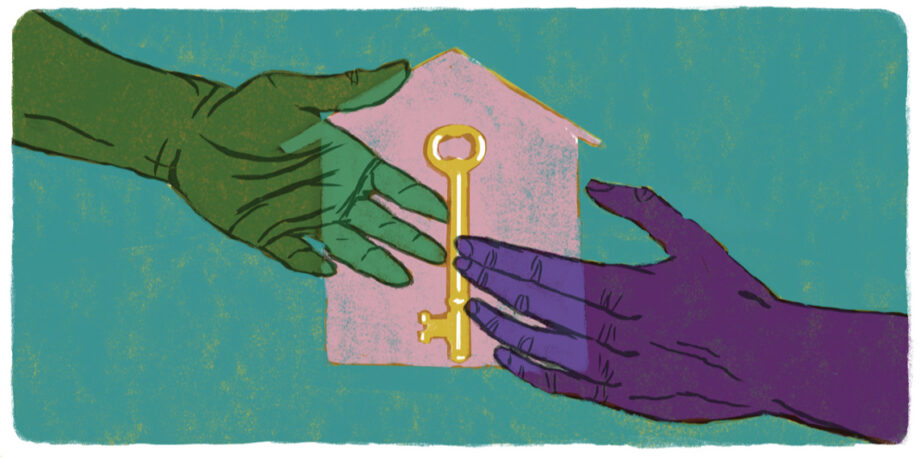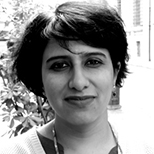January 7, 2014 — Editor’s note: The Millennium Development Goals, or MDGs, are international goals agreed upon by United Nations member states in 2000, following the Millennium Summit in New York City. Among other things, the MDGs include the eradication of extreme poverty, promotion of gender equality and women empowerment, and reduction of child mortality rates by 2015. The Sustainable Development Goals look beyond 2015 at how to achieve future development sustainably. Though agreed upon at the Rio+20 meeting in 2012, no specific goals were set, so a working group was set up and is currently working on a proposal of SDGs.
A longer version of this article also appears on Anju Sharma’s blog, here.
Some months ago, I wrote a blog post on the United Nation’s post-2015 process for Sustainable Development Goals and Millennium Development Goals, noting that the global community had not yet been able to reconcile its differences on environment and development. The blog called on the global community to start facing up to the causes of poverty and environmental degradation, rather than setting artificial goals that merely put the focus on symptoms. This, I said, was the only way to create a more effective, integrated, inclusive and trustworthy system of global governance for sustainable development.
But just how can sustainability be reconciled with development and global governance be made more inclusive and trustworthy? It has taken me a while to approach this question in writing, mainly because I had my head down in a field-based study on the challenges of adapting to climate change impacts in rural India. This turned out to be rather fortunate, because it gave me a lens through which to look at the post-2015 process. On both the challenges facing poor and marginalized communities in adapting to climate impacts and the post-2015 process the aim of global processes is to effect change at the local level, where implementation is to take place. In both cases intense international debate is occurring, and reconciliation between sustainability and development is urgently needed if action is to be effective.
An Agenda for Post-2015
There is a lot of talk about “paradigm change” and “transformational change” these days, both in the context of climate change and the post-2015 process. Transformational change takes knowledge and courage. Do we and our governments (in both developed and developing countries) have the stomach for it?
Why do we continue to talk merely of community “participation” in development? Why not community-driven development, or community-driven adaptation, where communities don’t just participate in activities meant to benefit them, but actually lead them?
Currently, the system of global governance for sustainable development is ineffective, inequitable and incoherent. The interagency technical support team, or TST, established to assist the Open Working Group for the SDGs under the umbrella of the U.N. System Task Team, largely agrees with this analysis in its issue brief on global governance, where it finds that “current arrangements have been unable to satisfactorily address development challenges”; fall short on representation, with developing countries underrepresented in several key decision-making bodies; and are incoherent, “unable to bridge the gap between globally agreed goals and aspiration, and policies at the national level.” It finds that the current mass of specialized international organizations “presents a challenge for integrated responses” in a time of interrelated sustainable development challenges. Moreover, the TST analysis agrees that the current funding architecture incentivizes global institutions “to advocate the relevance of their specific agendas and mandates in order to strengthen their fundraising prospects, even sometimes at the expense of a broader and more efficient inter-agency collaboration.”
If we are serious about addressing the concerns of poor and vulnerable communities through meaningful sustainable development and building a system of global governance that is effective, integrated, coherent and fair, here is what we must do.
1. Make community-driven development the primary goal for global development policy
Communities across the world have proven again and again that they are capable of much more integrated thinking than bureaucrats chasing a water or agriculture or livelihood target. Why, then, does the global community (including national governments) persist in putting communities in a position where they have to bow to lesser wisdom? Why, for instance, do we talk of community-based adaptation and ecosystem-based adaptation to climate change as two different approaches? Why not “community- and ecosystem-based approaches”? Why do we continue to talk merely of community “participation” in development? Why not community-driven development, or community-driven adaptation, where communities don’t just participate in activities meant to benefit them, but actually lead them?
What the communities are interested in is protecting their livelihoods and the natural resource base on which these livelihoods depend.
This is not to say that the global community should just step aside and let communities get on with it. Empowering communities carries with it the obligation to ensure that they are equipped to carry out the functions expected of them. The global community has a crucial responsibility to enable communities to identify and address their own priorities and solutions.
India, for instance, has been devolving planning and implementation to local governments, or panchayats, for the past two decades. It is not an easy job. There are deeply rooted vested interests — institutions and individuals that either seek power or have held it and are unwilling to let go. A lot of investment is needed, at least initially (more than India currently spends), in providing rural communities with the information, institutions, funds and capacity they need to develop, plan, implement and monitor solutions, and in creating systems for transparency and accountability to hold elected panchayats to account.
2. Resist the temptation to set top-down targets with earmarked funds
For too long, the global community — at the insistence of developed countries — has invested in building the capacities of global intermediaries or “implementing agencies” to plan and carry out globally funded development activities. This is because they trust neither developing country governments nor local communities to act in their own best interests. The global agencies, in turn, have promoted a divisive agenda based on top-down targets that alienate environment and development and are implemented through off-the-shelf solutions that rely on “tick mark” activity or data manipulation for success.
In India, for instance, when target-oriented, top-down policies filter down to rural villages, they arrive with earmarked funds that are neatly packaged and linked to sector-specific goals and targets, severely limiting opportunities for synergies among goals for agriculture, water, natural resource management or rural development. The same is true of global funding and goals. The funding arrives in rural India not only with conditionalities attached, but also with an alien and exclusivist vocabulary — “adaptation,” “mitigation,” “biodiversity” or “desertification” — which simply does not strike a chord with community needs.
We need to let countries and communities decide how development funds are used as long as they are used in a transparent, accountable manner and produce results.
What the communities are interested in is protecting their livelihoods and the natural resource base on which these livelihoods depend. In a country where more than 50 percent of the population still lives in rural areas and relies mainly on natural resource-based livelihoods, “jal, jangal, zameen” — water, forests, soil — are words that make sense. That slogan, used often by the rural poor in India to articulate the rights they value most, encapsulates the integral importance of the environment to development. For the rural poor, development simply has to be ecologically sound. In such cases, top-down targets with earmarked funds miss the real opportunities.
3. Design international financial institutions so that they are governed democratically by developed and developing country governments, and make community access to funds a priority
We need to let countries and communities decide how development funds are used as long as they are used in a transparent, accountable manner and produce results. The operational principles of global sustainable development funding should prioritize access by poor, vulnerable and marginalized communities, and funding should be predictable and flexible to allow for long-term planning and investments in enduring solutions. (The new Green Climate Fund of the United Nations Framework Convention on Climate Change is a good place to start — it is in the design stages now, but its governing instrument, already agreed under the UNFCCC, calls for the fund to “enhance direct access,” which is interpreted by many as the devolution of decision making on the use of funds to the recipient country.)
Currently, the unaccounted costs of ecosystem services work as a subsidy for the rich from the poor.
Once communities are firmly in the driver’s seat, we can thin down international financial institutions for development and channel the savings into building national and community capacity. For instance, a study published by the European Capacity Building Initiative estimates that if the Green Climate Fund enhances direct access and devolves decisions on which activities are to be funded to the country level, it will avoid the need to hire 25,000 to 40,000 people to process the $100 billion that could flow through it. Imagine the saving that could be directed to community empowerment!
4. To fund this process, revamp the global trade and financial system to take into account the real costs of ecosystem use to fund the lifestyles of the rich
Currently, the unaccounted costs of ecosystem services work as a subsidy for the rich from the poor. Given the poor record of rich countries in meeting their financial promises for development or climate change, a more “automatic” source of funding will be needed — either assessed contributions based on the wealth of a country, or an international income tax applicable to the rich in all countries. These funds could be used to create a global poverty fund that would channel resources to communities and monitor progress towards goals.
5. Build systems for “top to bottom” accountability, in addition to improving “bottom to top” accountability
Currently accountability flows only one way — up. There is no downward, reverse accountability. Agencies often lack accessible ombudspersons or dispute-resolution mechanisms by which communities may question their actions.
The global governance system must be made accountable to poor communities (even as the capacity is built for communities to hold their own elected governments accountable). Every global sustainable development process or institution must have an accessible process by which communities can question their decisions. “Bottom to top” accountability, meanwhile, should focus on results based on independent verification, but should also take into account that communities will have to go through a learning process and will need to build up their capacities, engagement and confidence over time.
The Ultimate Goal for Post-2015
For development to be truly sustainable, we must systematically and synergistically provide communities with information, capacity, technology and technical expertise and allow them to take control of their own futures and funds. Such an approach will better empower communities and ultimately lead to better results. ![]()
Editor’s note: The views expressed here are those of the author and not necessarily of Ensia. We present them to further discussion around important topics. We encourage you to respond with a comment below, following our commenting guidelines, which can be found here. In addition, you might consider submitting a Voices piece of your own. See Ensia’s “Contact” page for submission guidelines.
Ensia shares solutions-focused stories free of charge through our online magazine and partner media. That means audiences around the world have ready access to stories that can — and do — help them shape a better future. If you value our work, please show your support today.
Yes, I'll support Ensia!
